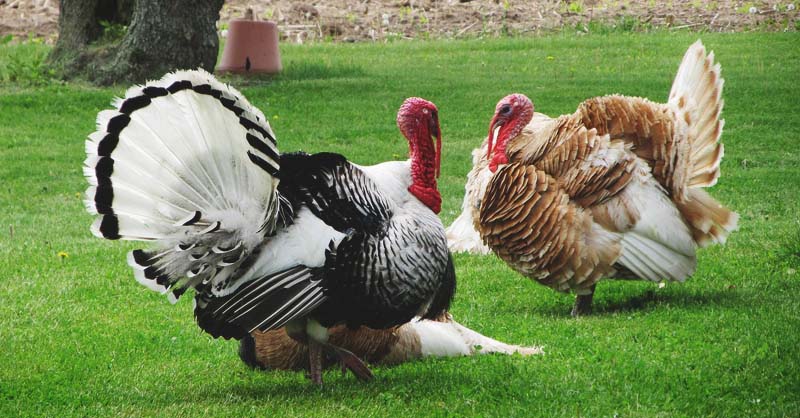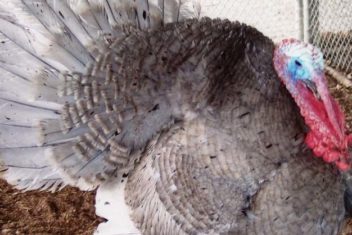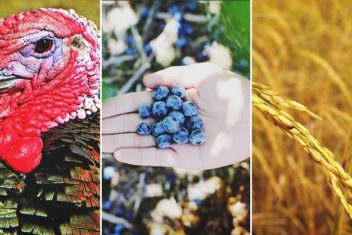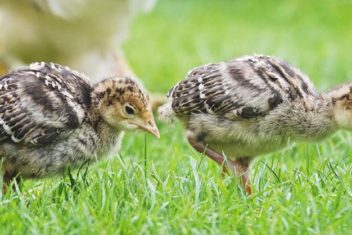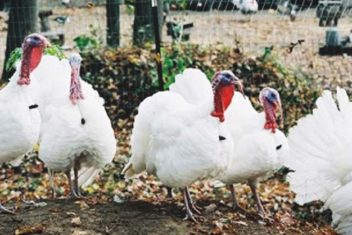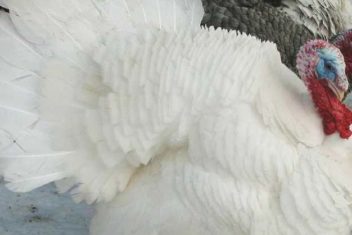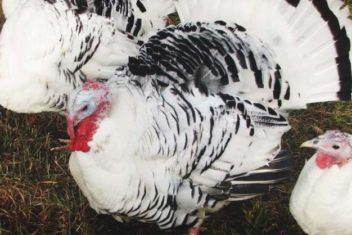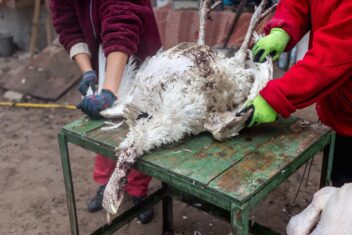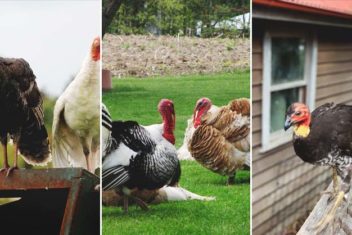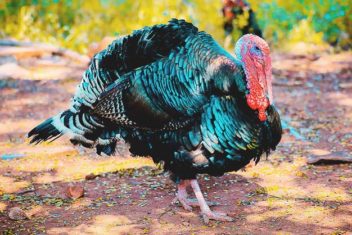We hear a lot about heritage breed livestock these days. In fact, homesteaders, like you and me, are a big part of why the preservation of “at risk” breeds has become a focus of home food production. We are the people who really understand the importance of preserving genetic diversity in our flocks and herds!
Even though non-commercial type livestock takes longer to mature, often require more feed, and are not usually well-suited for confinement, there are a lot of great reasons to focus on heritage breed livestock.
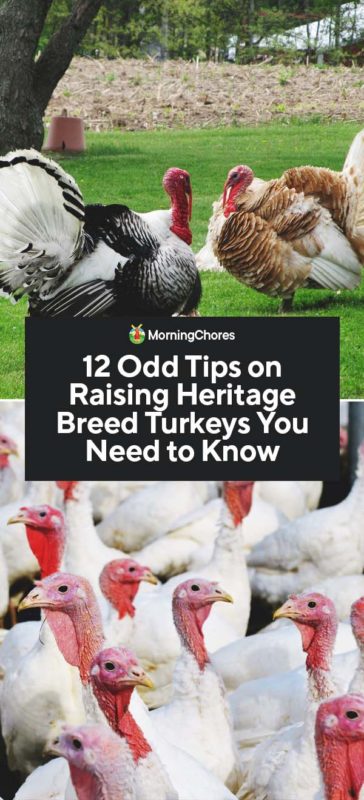
Why Heritage Breeds Matter
First off, it tastes better. Whether it be the eggs, meat, or milk of a heritage breed animal, the products we harvest take longer to develop and are therefore more flavorful and nutrient-rich than products rushed for commercial production.
Second, if we want to preserve our agricultural history, some of us must choose to raise slower-growing, naturally-reproducing, more wild-like kinds of livestock. If we don’t, they will become extinct like 50% of the livestock breeds that have already gone extinct in Europe and 30% that have disappeared in the US.
Finally, after watching other friends raise commercial-type livestock, I can’t imagine myself doing it that way. I understand the lure of fast-fattening poultry that lives to eat and are easy to pluck.
Still, for me, I don’t want to farm like an industrial farmer. I want to raise livestock on pasture and enjoy some of their wildlife antics. In other words, I want to farm like my grandma and generations before hers did. For that, you need heritage breeds, not commercial-type breeds.
Raising Heritage Breed Turkeys
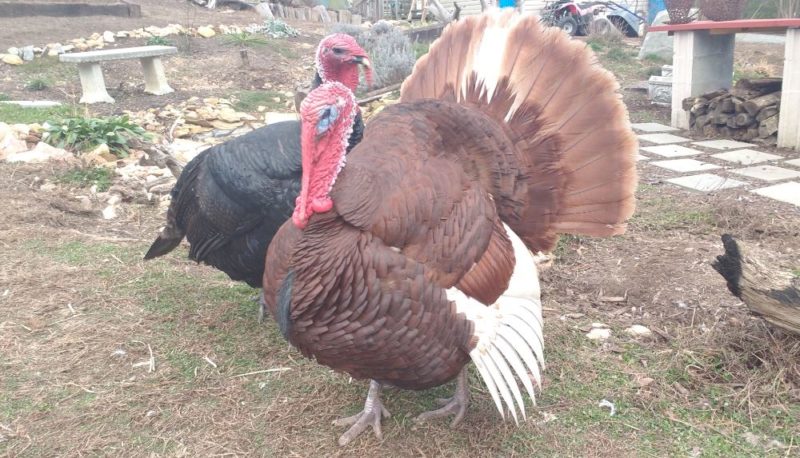
Now, truth be told, it is pretty easy to raise heritage breed chickens for a reasonable cost. Their small size and easy care requirements make them a great place to start your journey with heritage breed livestock. But if you are ready for something a bit more challenging than chickens, then think about heritage breed turkeys.
Like all heritage breed animals, heritage turkeys have long histories that pre-date the industrial food systems that dominate our food supply today. With the industrialization of poultry practices and the preference for white-feathered, large breasted roaster-type turkeys, there was a point not too long ago when only 1500 heritage breed turkeys were left in the US.
Thanks to organizations like The Livestock Conservancy, Slow Food USA, the Society for the Preservation of Poultry Antiquities, and the Heritage Turkey Foundation word got out about the risk of losing our turkey breeds to extinction. Small farmers and backyard flock keepers rallied to save the heritage breed turkeys. Also, consumers joined in by spending up to $200 per turkey to support the farmers raising these breeds.
As a result of those efforts, the Bourbon Red and Standard Bronze breeds have been downgraded to being on “watch.” The Narragansett, Black, and Royal Palm are “threatened” but no longer critical. However, the Beltsville Small White, Jersey Buff, Midget White, Slate, and White Holland turkey breeds are still considered “critical” and in need of urgent preservation.
If you want to join the efforts to preserve our heritage breed turkeys, start by choosing one of those breeds mentioned above. Then, keep in mind the following information as you plan their care.
Heritage Breed Turkeys are Half Wild
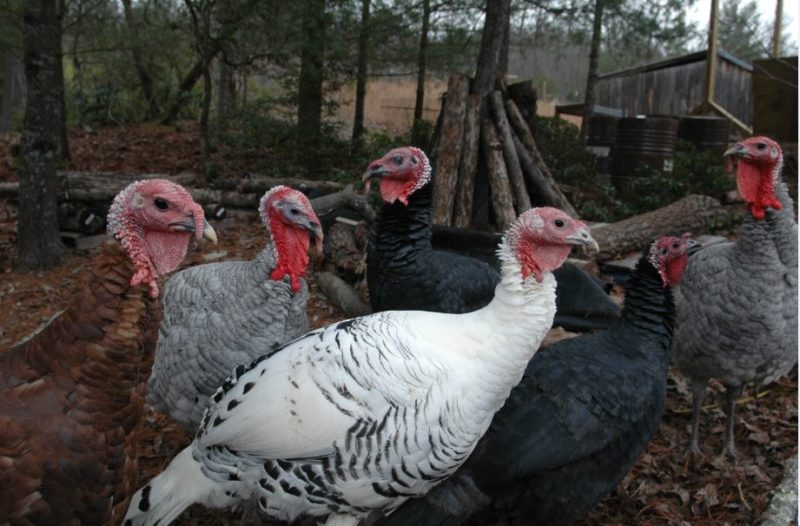
The thing that makes a heritage breed turkey “heritage” is that they still retain many of the natural behaviors of their wild ancestors. For example, heritage breed turkeys still follow the seasonal patterns relating to mating.
1. Seasonal Laying and Broody Behavior
Heritage breed turkey hens still lay eggs primarily during mating season which runs February to August (depending on climate conditions). The hens also have a strong desire to set nests. So, they tend to lay eggs in secret locations to protect them from predators or turkey keepers who want to steal their eggs.
Once the hen has a clutch of 4 – 18 eggs, she is likely to defend her future children from theft or damage voraciously. In other words, even if you are besties with your breeding turkey hen before she goes broody, use caution once she starts to set!
2. Male Dominance
On the male side of things, toms in full mating glory spend a significant amount of their lives showing off their majestic feathers and doing battle to establish a hierarchy between males. The dominant male gets first pick of the ladies. Others fall into line.
If your toms consider you part of their flock, then they will either identify with you as male or female. This doesn’t matter what sex you actually are. They make those decisions based on how they perceive your behavior.
If they consider you to be a male, they may treat you like a threat to their pecking order and fight with you when you do anything they read as aggressive. If they see you as a female, they may try to mate with you.
Ideally, your mature tom turkeys will see you as something other than part of their flock. In that case, they may show off their feathers, but not try to mate you or fight you.
There are no clear guidelines on how to prevent turkeys from identifying with you as part of your flock. Generally though, keeping clear lines between you and toms will help. Avoid squatting around your toms. Also, try not to wear or carry objects that are bright blue or red, similar to the color displays on a mature tom’s head.
3. Wide Ranging
Heritage breed turkeys, like their wild relatives, have a natural tendency to cover large areas when foraging. If they are not confined, they can even cover miles like their wild counterparts and become lost to the wilderness.
When raising heritage breed turkeys on pasture, you will need to use electric or other fencing to limit their foraging range. You most likely will also need to clip one of their wings to ensure that they don’t take a short flight over whatever fence you install.
4. Confinement Considerations
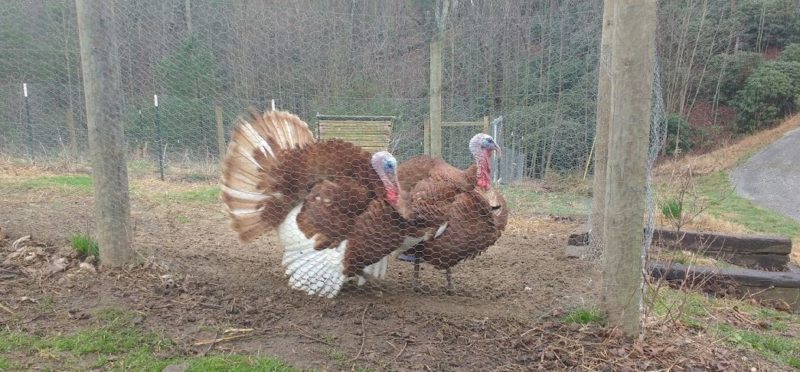
Heritage breed turkeys require extra care when you confine them, whether in the brooder or when using a pen for mating and brooding using a turkey hen.
These birds have very sensitive lungs and are prone to respiratory problems in confined spaces. In particular, turkeys are sensitive to ammonia levels lower than our human noses can perceive. They are also highly susceptible to mycotoxins associated with mold that might grow in hay or wet grain or feed.
– Clean Often
Rather than relying on your perceptions about when to clean turkey areas, proactive cleaning is advised. Changing litter often and using more absorbent mold-inhibiting materials like pine shavings can help.
– Use a Fan
In enclosed areas, hanging a box fan over the brooder area so that it draws moist, ammonia-filled air out of the brooder can also mitigate risks. Do not let the fan blow into the brooder, though, as turkey poults are also sensitive to temperature changes from drafts.
– Open Air Coops
For older turkeys, using open-air coops with overhead protection and keeping the floors covered with fresh litter will reduce risks.
– Roost Relief
Give turkeys roost bars that are 24-30 inches off the ground for nighttime use. This way they’ll have some distance between their fresh droppings and their lungs when they are stationary at night.
5. Protect the Weak
Heritage breed turkeys still retain many of their survival skills including the instinct that tells them to kill any weak members of their flock. To our human ways of thinking, it can be gruesome to see how quickly turkeys will turn on an injured flock mate.
The toms will pounce and begin a process that looks like they are trying to mate a wounded turkey to death. Even turkey poults have this instinct. This is why you may sometimes find turkey poults that look they have been trampled to death in your brooder. Their brooder mates do in fact pick, peck, and trample weak members to death as part of their natural behavior.
Bad as this seems though, since weak turkeys are more likely to draw predators, it does make sense in a natural setting. However, on our homesteads, to prevent this kind of behavior we need to separate any weak or injured turkeys from the flock until they are healthy again.
6. His and Her Flocks
Although males and females can all be part of the same flock, logistically the females tend to group together, and the males tend to group. They generally only mix when it’s time to mate. This kind of segregation becomes most pronounced when turkeys are sexually mature.
In my experience though, the division of the sexes starts as early as a few days old if poults are given enough room to express preferences. The males tend to be eager to fly the coop while the females tend to group in corners. Also, males size up much faster and can be a danger to smaller females in close confinement.
As much as possible, give your turkeys extra room to express their natural desires to segregate into male and female sub-flocks to facilitate harmony. Separate male and female raising out areas are even better.
7. Ideal Immune Development
In addition to “his and her flocks” wild turkey hens will isolate themselves from their female flock to set their nest and brood their young. Generally, turkey hens will raise their poults away from the rest of the flock until they are about 14 weeks old. At that point, they’ll join up with the rest of the turkey flock for integration into the larger flock that bands together for winter survival.
This isolation behavior is one of nature’s ways of allowing young poults time to develop a working immune system before they are exposed to large quantities of other turkeys’ droppings that may contain pathogens such as blackhead or coccidiosis. It also allows turkeys time to size-up and practice establishing turkey hierarchies with their siblings before they encounter fully mature birds.
Like their wild relatives, heritage breed turkeys also have similar immune development times. They too require similar amounts of isolation from other turkey populations for their good health and safety. On small homesteads, it might not be possible to allow 14 weeks of separation, so 8-12 weeks is the general recommendation.
Ideally, turkeys under four weeks of age should not be placed on pasture that has been inhabited by other turkeys unless the pasture has been vacant for at least 21 days. This is the period necessary to reduce pathogen risks for young turkeys with developing immune systems.
8. Built to Forage
The commercial-type turkeys like the broad-breasted fatten so quickly that it’s difficult for them to do much foraging for food. Heritage breed turkeys though, gain weight slowly because they are very active birds.
They are designed by nature (and selected by their historical breeders) to spend a significant amount of their waking hours finding food. They are susceptible to developing specific ailments like perosis if not allowed access to natural sunlight and activity on non-slip flooring from a young age on.
As such, you will get significantly more flock behavioral problems with your heritage breed turkeys if you don’t let them forage some of their food. I’ve had the best results with turkeys when I give them access to pasture and scatter some of their high protein seeds in the pasture for them to “forage.”
Even if you can’t give them as much area as they would like, keeping them busy by letting them forage the food you provide can promote better flock dynamics on a small homestead.
Heritage Breeds are Half Domesticated
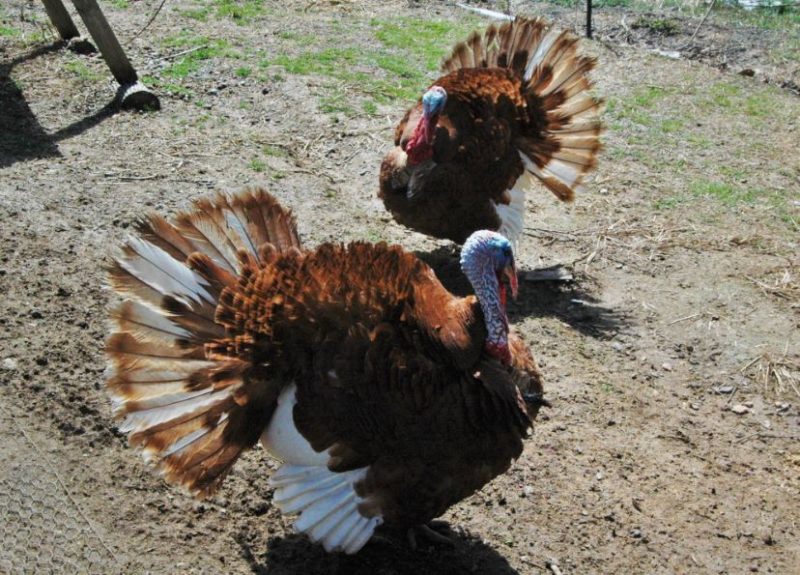
Although heritage turkeys retain many of their wild ancestor behaviors, they do also have a few domesticated qualities that impact how you’ll need to raise them.
9. Supplement Feed Required
Heritage breed turkeys have the ability to grow larger than their wild kin. However, they still need the same extremely high protein feed quality that their wild ancestors ate.
Most of us can’t give turkeys enough miles to wander to find sufficient protein, especially given the increased calorie requirement for their enhanced size. So, supplemental feed is a must.
Protein levels of 28-30% are best. Estimates on how much feed you need per bird range from about 3 pounds to 6 pounds for every pound of meat to get birds to processing size.
I feed free choice rather than flash feeding for heritage turkeys. They tend to eat small amounts many times a day by natural habit. So, I assume letting them do as they would in nature is better than forcing them to gorge at set feeding times.
10. Predator Prone
Since heritage breeds grow larger than wild turkeys, their ability to fly is also limited by their size. Mature wild turkeys can easily fly 25-30 feet to escape predators. Mature heritage breed toms, on the other hand, can often only fly a few feet. They tend to run to escape predators and unfortunately are not very fast.
Smaller heritage breed females often do retain the ability to fly for most of their raising out period. However, unless you offer pasture with branches they can use to escape, their flight abilities are not sufficient to escape faster predators.
This means our heritage breed turkeys are a lot more prone to predation than wild turkeys would be. Generally, for best results, turkeys need 360-degree protection at night and location appropriate protection during the day.
If you have significant predator pressure by day, then you’ll need a fenced perimeter and overhead protection for your turkeys. If you have light predator pressure, then perimeter fencing and shelter from the elements like rain and sun might be sufficient.
Processing Preparations
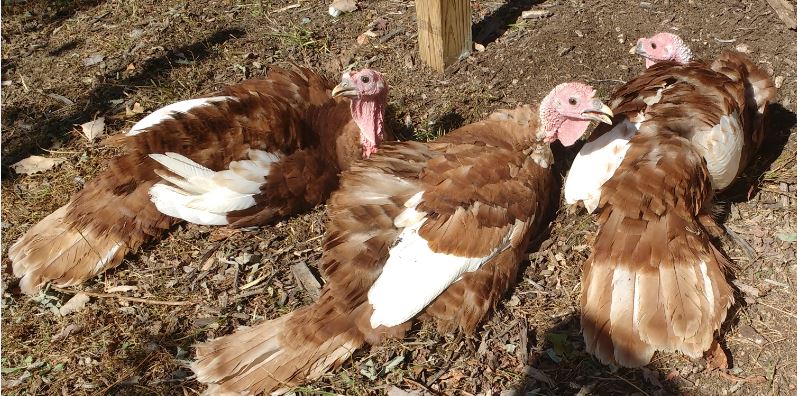
Since most people raise heritage breed turkeys as a meat source, there are a few things you need to know for processing.
11. One Size Does Not Fit All
Heritage breed toms have very deep chest cavities. They also have a pronounced breast bone. It can make packaging whole turkeys complicated. Females also have more elongated shapes than your broad breasted commercial turkeys.
As such, “turkey” sized poultry processing bags may not work for all your heritage breed turkeys. Keep some butcher paper on hand in case you have to go old school and wrap your carcass. Or, consider bagging meat cuts separately.
This also holds true for your kill cones. Not all toms will fit nicely into your large-sized kill cone. You can cut the corner out of a 50-pound feed bag and use that to hang your larger toms or use a chopping block and decapitate your turkey. Or, tie their legs in a hanging rope.
12. Hard to Kill
Most processors don’t like to talk about the times when things didn’t go right. Honestly, with ducks and chickens, it’s pretty easy to do it right. So, there’s often not a lot to talk about.
With turkeys, particularly heritage toms raised for 16-20 weeks tend to have leathery necks. Even with a sharp knife, it can be tricky to get a good bleeding cut from a hanging position.
So, I know lots of processors who have stories about heritage breed turkey kills going wrong. I have a few less than savory tales of my own. Based on experience, my preferred way to kill a turkey is to decapitate using a chopping block and a sharp ax.
Also, heritage breed turkeys are extremely active with tight, strong muscles. They can be a bit more difficult to subdue and process than a chicken. So, if I can get someone to help me, it’s much easier to have one person hold and the other chop.
Those family story of grandma doing it on her own are certainly true. But Grandma wasn’t feeding her heritage breed turkeys 30% protein feed for optimal returns on meat gain. Her turkey was smaller with less well-developed muscles than a well-raised modern heritage breed turkey. In my opinion, there’s no shame in an extra set of hands for processing if it makes it less stressful for you and your turkey.
Conclusion

Heritage breeds do require some extra thought and planning to raise them well. Yet, they are so much more fun to raise, rewarding to learn from, and beneficial on our homesteads. Even if it costs a bit more, and takes a while longer to get to processing weight, raising heritage breed turkeys is a noble activity for well-prepared homesteaders.
If turkeys are on your horizon, consider raising some of the breeds that fall into the threatened or critical status and help put them into the watch category like Bourbon Reds and Narragansett.

